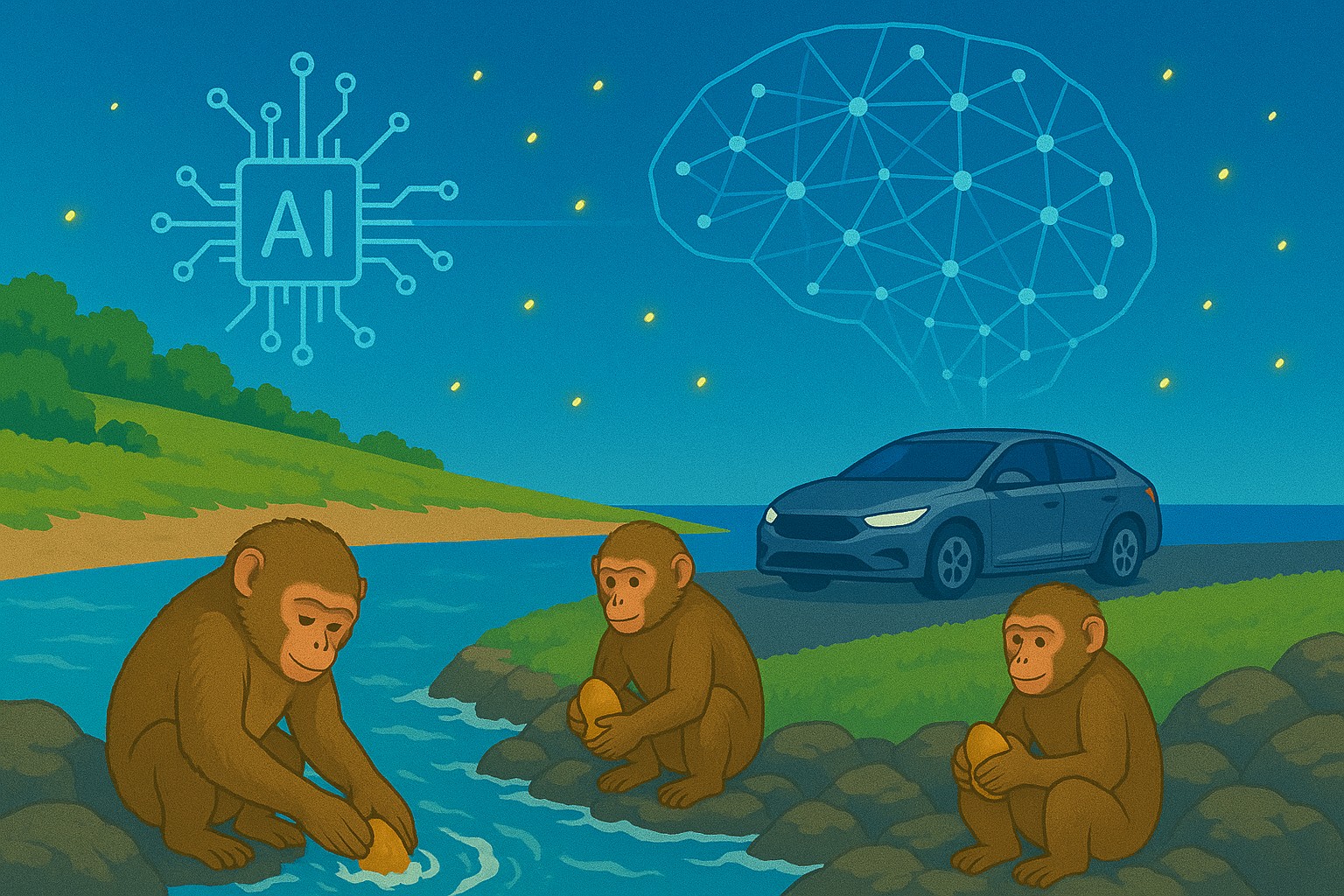When I look at the natural world, I often wonder: to what extent can living organisms engage in parallel learning and reasoning? While it’s obvious that animals—especially humans—share information using language or symbols, what fascinates me even more are those mysterious phenomena where knowledge or behavior acquired by one individual seems to spread to others in distant locations, without any direct communication.
A well-known example is the “Hundredth Monkey Phenomenon.” According to reports, a monkey on a Japanese island began washing sweet potatoes before eating them. Over time, this behavior spread to other monkeys on the island, and eventually, monkeys on nearby islands—despite no physical contact—were said to adopt the same behavior. While the scientific accuracy of this story is debated, it suggests the intriguing possibility of behavioral transmission on a collective level.
Another striking case is the synchronized flashing of fireflies. In certain species, large groups of fireflies spontaneously synchronize their light patterns. This isn’t directed by any leader or central controller, but emerges from simple interactions between individuals. It’s a powerful example of how distributed systems can achieve remarkable coordination.
If such collective learning or reasoning mechanisms could be replicated—or even enhanced—in humans, it would be revolutionary. Imagine a world where knowledge gained by one person instantly becomes accessible to everyone.
As a child, I used to believe that even if there weren’t any extraordinary people around me, there must be brilliant scientists, engineers, doctors, or political leaders somewhere in the world who could solve any problem—be it a natural disaster or an unknown disease. But as I grew older, I realized that the world isn’t that simple. Even when great minds or cutting-edge technologies exist, they are often locked away behind patents, trade secrets, or expensive licensing agreements. And even then, it takes years of research and significant financial investment to bring advanced technologies into practical use.
In the world of artificial intelligence, we face similar challenges. How can we effectively implement parallel learning and parallel reasoning across distributed systems? And once we do, how can we make the resulting knowledge accessible and usable for everyone? These are not easy questions, but I remain hopeful.
Someday, I believe we’ll reach a point where human and AI intelligence can truly collaborate—learning, reasoning, and sharing knowledge instantly and globally.
Learning from Nature: Parallel Learning and Reasoning in AI

コメントを残す